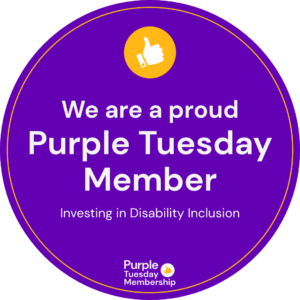Over the last six months, many of our payment and e money institution clients have approached us about their complaints handling process. The drivers are a combination of direct requests for oversight evidence from the FCA and the linkage with internal work to meet the vulnerable customer and consumer duty expectations. We have noted some areas of confusion or weaknesses that I will share with you in this blog.
1. What is a complaint?
Every well-trained staff member in financial services will be able to tell you the FCA’s definition of a complaint[1], but it can be complex for customer-facing staff to assess whether a customer’s expression of dissatisfaction is covered under the rules and guidance set out in DISP. In order for an expression of dissatisfaction to be considered a complaint it must involve a financial loss, or ‘material’ distress/inconvenience. To resolve the complexity for front-line staff, some firms will deal with all expressions of dissatisfaction as a regulatory complaint. Throwing the net wide like this and capturing all sorts of customer communications has two drawbacks:
it may unnecessarily slow the response to the customer; and
it increases the reportable complaints for the firm.
To add to the complexity, payment service providers must assess whether the regulatory complaint is a ‘PSD complaint’ or ‘EMD complaint’; that is a complaint that relates to the conduct of business rules set out in the Payment Services Regulations 2017 (PSRs) or the Electronic Money Regulations 2011 (EMRs). The importance of determining this is that it shortens the timeframes for the response from eight weeks for non-PSD/EMD complaints to just 15 business days.
In our experience, empowering front line staff to use their good judgement results in good outcomes for customers with swifter responses, reducing the need for the customer to explain and re-explain the reason for their complaint and more customer-friendly language in the response. It’s vital that staff are supported to use good judgement with quality training that incorporates opportunities to discuss scenarios as well as peer support when handling real cases.
2. Is every day a business day?
Most firms regard business days to be their standard working week – Monday to Friday. If you asked customers when the business is open, or should be open, you’d probably get a variety of responses: more traditional businesses might be expected to be closed on Saturdays, Sundays and bank holidays but others will be expected to be open because their online access and the faster payments system don’t sleep. If your customers can make payments every day of the week then the FCA is likely to judge that every day is a business day. This is important not only for the timeframes within which a complaint must be dealt with but also for the impending consumer duty which may cause you to question how easy it is for your customers to contact you when they need you.
3. Customer service at arm’s length
Outsourcing customer service and/or complaints handling to a group entity, a distributor or agent or a separate third-party can be an effective and efficient way of providing a great service to customers. Clearly, as the regulated entity, you have to stay on top of whether the service really is great. Whether you set the framework for the outsourcing service provider to adhere to or they propose the framework to you, you must validate that the framework is right and that it is properly implemented. Bear in mind the experience of your customers too; if the arrangement involves the customer having to re-explain the details of the complaint to another agent it may begin to feel like a barrier to making a complaint.
4.Second and third line testing
Clearly the operations team will perform their own quality assurance on their customer service calls but the compliance function should also sample test and monitor how the business is meeting its obligations. How are customers’ communications handled (because looking at the register of complaints alone will not indicate whether complaints are being appropriately identified)? Are customer-facing staff identifying expressions of dissatisfaction and determining those that are regulatory complaints? Are staff distinguishing those subject to the PSD/EMD complaints timeframes? Are complainants treated fairly? Are those in vulnerable circumstances being treated sensitively and fairly? Are senior management on top of how customers are experiencing the business and the products and services offered?
An independent review (whether by the internal audit function or commissioned from an external provider) of the complaints process, end-to-end, will provide invaluable insight into the customer experience that will inform the Board’s assessment of how well the business is meeting the new consumer duty, in due course. It is also likely to reveal opportunities for operational efficiencies from greater clarity and better management information that will improve circumstances for both customers and staff.
If you would like to talk to us about your complaints handling process, contact me or one of my colleagues.
This post contains a general summary of advice and is not a complete or definitive statement of the law. Specific advice should be obtained where appropriate.
[1] ‘Any oral or written expression of dissatisfaction, whether justified or not, from, or on behalf of, a person about the provision of, or failure to provide, a financial service or a redress determination, which alleges that the complainant has suffered (or may suffer) financial loss, material distress or material inconvenience and relates to an activity of that respondent, or of any other respondent with whom that respondent has some connection in marketing or providing financial services or products, which comes under the jurisdiction of the Financial Ombudsman Service.’ (FCA Handbook, G197)



























